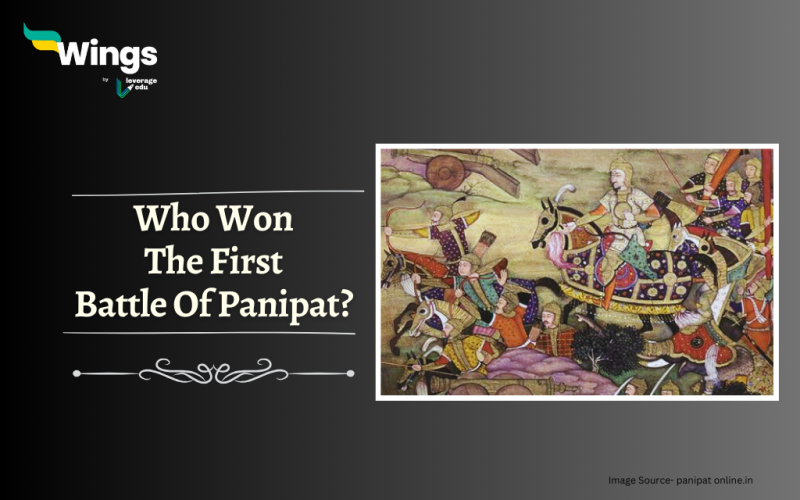The first battle of Panipat was fought on 21st April 1526. It was fought between the forces of the Mughal Emperor Babur and the Sultan of Delhi, Ibrahim Lodhi. It was fought on the plains of Panipat now Haryana in India. Indian history has witnessed three Battles of Panipat in total. Babur, a descendant of Genghis Khan and Timur, was determined to establish his rule in India, while Ibrahim Lodhi wanted to defend his kingdom from the invaders. In this blog, we will get to know who won the first battle of Panipat.
Table of Contents [show]

Historical Context
- Babur: Babur was a skilled military strategist and ruler. He led the Mughal forces in the battle. He deployed nearly 12,000-25,000 infantry and 15-24 artillery cannons and mounted heavy archers on the battleground.
- Ibrahim Khan Lodi: Ibrahim Lodi was the Sultan of Delhi and belonged to the Lodi Dynasty, who allied with Vikramaditya, the ruler of the Gwalior Tomara Dynasty. He deployed nearly 30,000 infantry with 40,000 irregular and regular cavalry.
Also Read – Complete Mughal Empire List: An Overview
Circumstances of the First Battle of Panipat
- Babur marched towards Delhi with battle strategies like Tulughma and Aaraba, the Ottoman tactics of war.
- Babur’s use of artillery and firearms proved to be crucial in defeating Ibrahim Lodhi’s army, which was primarily composed of cavalry.
- He outmaneuvered Lodi with his tactics and Lodi was left alone on the battleground with only a handful army.
- In his attempt to escape he was killed, resulting in the defeat of the Delhi Sultanate.
- Babur’s victory established the Mughals as a dominant force in the region and led the way for the subsequent expansion of the empire.

With the First Battle of Panipat, the Mughal Empire came to India and ruled for approximately 331 years from 1526-1857. The battle had a far-reaching consequence in the change of thrones in the Indian subcontinent.
That’s all about who won the first battle of Panipat. If you want to read more articles like this, you can get Study notes on the Modern History of India here. Also, you can visit our general knowledge page on Indian History!
 One app for all your study abroad needs
One app for all your study abroad needs















 45,000+ students trusted us with their dreams. Take the first step today!
45,000+ students trusted us with their dreams. Take the first step today!
